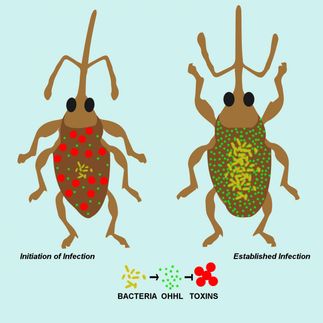Better sludge through metagenomics
Researchers seek to master wastewater treatment failures
wastewater treatment is the largest microbially-mediated biotechnology process on the planet. When it works, it is a microbial symphony in tune with humanity. When it fails, the consequences can be dire. Researchers from the U.S. Department of Energy Joint Genome Institute (DOE JGI) and collaborators at the University of Wisconsin-Madison, and the Advanced wastewater Management Centre, University of Queensland, Australia, have published the first metagenomic study of an activated sludge wastewater treatment process. The research appeared in Nature Biotechnology.
The metagenomic strategy entails generating DNA sequence information directly from samples of sewage sludge to provide a blueprint of the genes and hence the metabolic possibilities of the wastewater environment, with a view to understanding how the system works and predicting and averting failures or crashes.
"This is a first step in a much broader strategy employing a systems biology approach to the study of microbial communities with the goal of designing predictive models to understand how these communities function," said Hector Garcia Martin, lead author of the study and post-doctoral fellow in the DOE JGI's Microbial Ecology Program. "With this information now available, there are opportunities to bioengineer the process to make it more reliable."
Removing excess phosphorus from wastewater can be most economically accomplished by environmentally friendly biological means in a process known as enhanced biological phosphorus removal (EBPR). The researchers were able to obtain a nearly complete genetic blueprint for a key player in this process, the bacterial species Accumulibacter phosphatis.
Activated sludge wastewater treatment processes are used throughout the world to purify trillions of gallons of sewage annually. Many treatment plants employ specialized bacteria to remove the nutrient phosphorus, in an effort to protect lakes and rivers from eutrophication, a deterioration of water quality characterized by excessive algae blooms. Accumulibacter play a vital role in wastewater management, accumulating massive amounts of phosphorus inside their cells.
"Engineers and microbiologists have been trying for 35 years to grow this microbe, with no success," said Trina McMahon, Assistant Professor, Department of Civil and Environmental Engineering, University of Wisconsin, Madison, and one of the study's authors. "Remarkably, through metagenomic techniques, we were able to isolate and acquire the genome sequence of Accumulibacter phosphatis without a pure culture of the organism, which, like most microbes, eludes laboratory culture. We expect that clues hidden in the genome will lead to domestication of this mysterious organism, enabling further studies of its habits and lifestyle. The genome sequence will also enable biologists and engineers to understand why and how these organisms accumulate phosphorus, and it will lead to major advances in optimizing and controlling the EBPR wastewater treatment process," McMahon said. "In particular, it makes possible further research into why some wastewater treatment plants occasionally fail. These failures often result in serious pollution of lakes, rivers, and estuaries."
Most read news
Topics
Organizations
Other news from the department science

Get the analytics and lab tech industry in your inbox
By submitting this form you agree that LUMITOS AG will send you the newsletter(s) selected above by email. Your data will not be passed on to third parties. Your data will be stored and processed in accordance with our data protection regulations. LUMITOS may contact you by email for the purpose of advertising or market and opinion surveys. You can revoke your consent at any time without giving reasons to LUMITOS AG, Ernst-Augustin-Str. 2, 12489 Berlin, Germany or by e-mail at revoke@lumitos.com with effect for the future. In addition, each email contains a link to unsubscribe from the corresponding newsletter.




















![[Fe]-hydrogenase catalysis visualized using para-hydrogen-enhanced nuclear magnetic resonance spectroscopy](https://img.chemie.de/Portal/News/675fd46b9b54f_sBuG8s4sS.png?tr=w-712,h-534,cm-extract,x-0,y-16:n-xl)




































